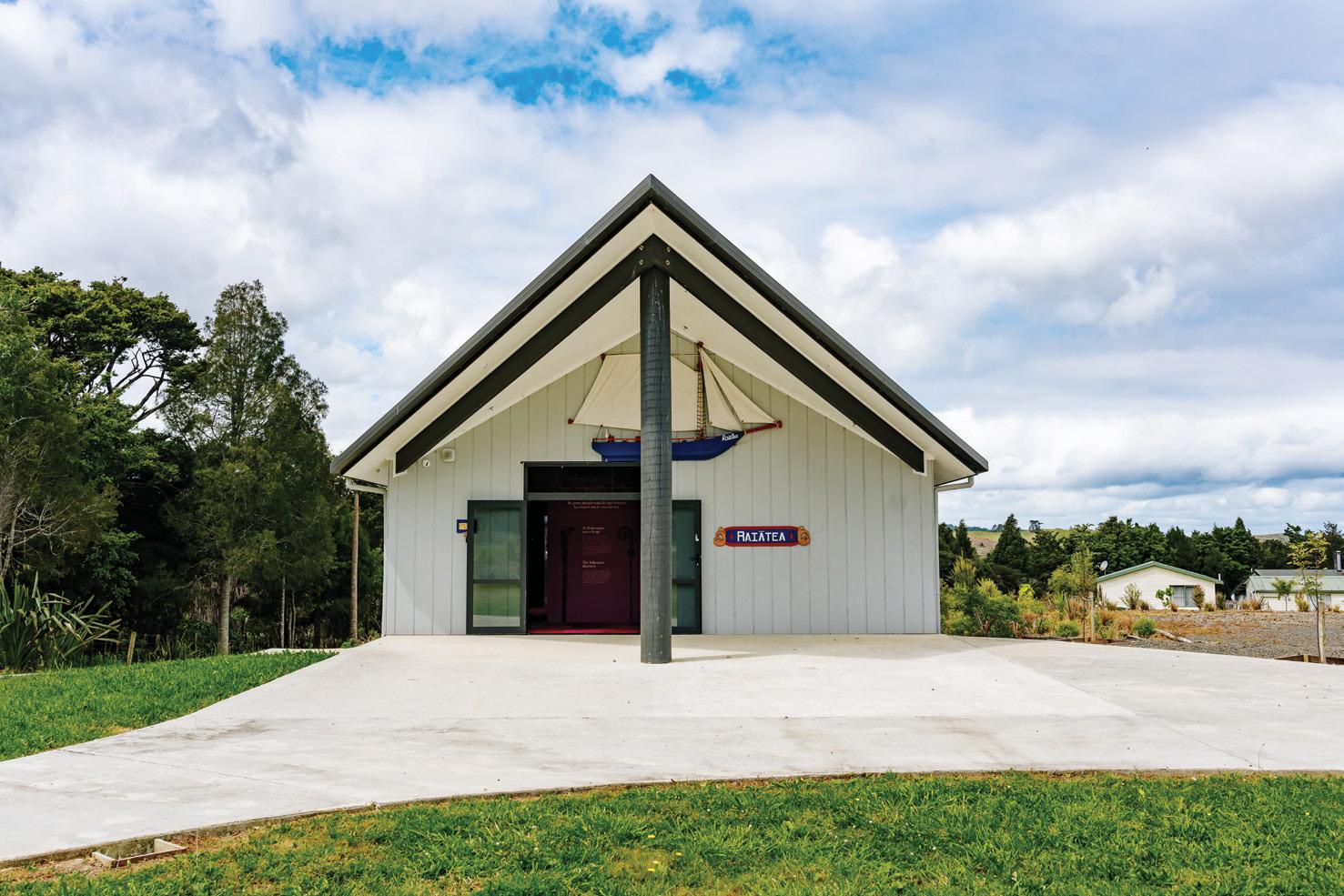
3 minute read
He tohu maumahara
WORDS: HELEN BROWN in 1877 led his people inland to establish the settlement of Te Ao Mārama in a peaceful assertion of Māori land rights.
At the outbreak of World War I, the whānau of Arowhenua proudly volunteered “every boy capable of bearing arms”.
Private Tuapaoa Whitau was among the early enlisters from the pā, serving in the first Māori Contingent that left Wellington for Egypt in February 1914.
Eighteen months later he wrote to his aunt, Miria Kemara, from the front line at Gallipoli: “Of the Temuka natives, I alone am left. All the others have been wounded. I suppose I’ll be the next, or perhaps will be killed outright. There’s only two things, and one to call upon – God above.”
Tuapaoa eventually returned home, but his brothers Arapata and Puaka did not. Other boys were also lost.
Location
Temuka
Standing sentinel on the corner of Huirapa Street, Temuka, and State Highway 1, Te Kāmaka o Arowhenua is a striking landmark on the route between the South Canterbury towns of Temuka and Timaru.
Along with the Holy Trinity Church on the opposite corner, the kāmaka points the way to Arowhenua Pā and its poignantly named wharenui Te Hapa o Niu Tireni (‘The Unfulfilled Promise of New Zealand’, a reference to the Crown’s failure to fulfil its contractual obligations arising from the 19th-century Ngāi Tahu land purchase agreements).
Trucks rumble past, sometimes precariously close. Indeed, the kāmaka bears the scars of a previous car crash.
Built in 1934-35 and believed to be the only Oamaru stone archway of its type in the country, the kāmaka (which is a wāhi tūpuna) is also extraordinary for its multi-layered commemorative associations as a war memorial, a marker of the Rātana faith, and a monument to the leader and prophet Hipa Te Maiharoa, who
Twenty years later when a war memorial was proposed at Arowhenua, Miria and her cousin Wikitoria Paipeta gifted land and funds for the purpose. Miria added her late nephews’ names to the list of fallen Māori soldiers to be inscribed on its roll of honour.
In the inter-war years many Arowhenua people adopted the Rātana faith, becoming mōrehu. When Tahupōtiki Wiremu Rātana, the charismatic founder of the movement, visited Arowhenua in 1934 with his 50-strong entourage, including the impressive Mōrehu Brass Band, plans for the kāmaka were confirmed.
Local stonemasons undertook the construction, and Māori decorative work was added by a craftsman provided by Rātana. In addition to the names of the war dead, kōwhaiwhai patterns, Rātana symbols and scripture, and the raukura plume of feathers – a symbol of peace and passive resistance – were carefully etched into the limestone block structure.
The following year, the Māngai (as Tahupōtiki Wiremu Rātana was known in the Rātana faith) returned and unveiled the completed kāmaka, which had a counterpart with a similar design (unveiled just four months earlier) at Rātana Pā in Whanganui. A ‘model pā’ comprising several small whare made at Rātana Pā and shipped south was installed on the reserve behind the kāmaka.
Anne (Sissie) Te MaiharoaDodds (Waitaha, Ngāti Rārua) remembers as a child in the 1940s seeing these “little Māori houses with thatched roofs”. Her whānau helped to care for them and for the kāmaka itself. As a mōrehu, a greatgranddaughter of Hipa Te Maiharoa, and a niece of Wikitoria Paipeta, Sissie says the kāmaka has been an enduring and important place throughout her life.
“We deeply respected it, right from a young age, because we belonged to the Rātana Church. Our Aunt Wikitoria’s husband, Pita Paipeta, was an āpotoro. He led lots of church services at the kāmaka marking special occasions on the Rātana calendar.”
When Sissie married in 1955, her wedding service was conducted in the lee of the kāmaka. Tuapaoa’s granddaughter Koa Whitau-Kean (Rapuwai, Waitaha, Ngāti Māmoe, Ngāi Tahu) also emphasises the importance of the kāmaka as “not just a pretty arch” but a “spiritual place” that was utilised for wānaka (in other dialects ‘wānanga’).
Her late father Richard Whitau recalled evenings spent there when he was growing up, with kaumātua praying and sharing their knowledge of star lore.
Today, commemorative events in collaboration with the RSA and the local school also take place at the kāmaka on most Anzac Days.
Sissie, Koa and other descendants of the original kaitiaki of the kāmaka, including former manager of the Arowhenua Marae Gwen Bower (Rapuwai, Waitaha, Ngāti Māmoe, Ngāi Tahu – Ngāti Huirapa), are in the process of re-establishing a committee to oversee its restoration and ongoing care.
As Gwen says, “We have always included the kāmaka on our list of significant sites to ensure its mana is acknowledged and that the correct stories about it are shared. It’s important that we ensure the kāmaka is protected for future generations.” āpotoro: lay reader kaitiaki: guardians kāmaka: monument kaumātua: elders kōwhaiwhai: painted scroll ornamentation mana: life force, prestige
Māngai: ‘mouthpiece’ of the Holy Spirit; Rātana founder Tahupōtiki
Wiremu Rātana maumahara: remembrance mōrehu: ‘remnant’; followers of Rātana tohu: sign wānaka*: sacred knowledge; in this context, a time and/or place for sharing and transmitting knowledge and practices cherished by mana whenua whare: buildings and homes wharenui: meeting house
*Ngāi Tahu spelling









